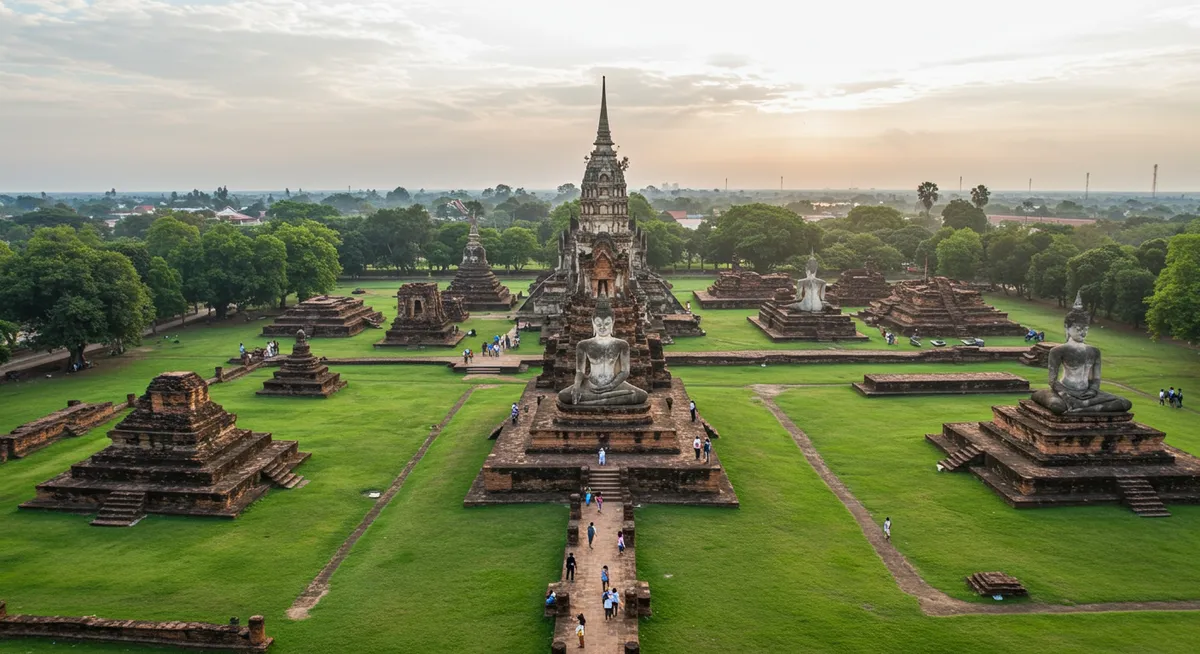
Sukhothai Historical Park Highlights: Your Essential Guide
Table of Contents
Want to find the best travel deals for this destination? Chat with our travel hacking specialist!
Get Travel HacksCategory: sukhothai-historical-park-highlights
Unearthing the Treasures of Sukhothai Historical Park
Having personally explored the magnificent ruins, I can attest to the profound beauty of Sukhothai Historical Park, a UNESCO World Heritage site that truly captures the essence of ancient Siam. This guide focuses on the must-see Sukhothai Historical Park highlights, ensuring you experience the best of its spiritual and architectural grandeur. Indeed, a visit here offers a rare glimpse into Thailand's glorious past, making it an essential stop for any history enthusiast or cultural traveler.
Wat Mahathat: The Spiritual Heart
Wat Mahathat stands as the central and most significant temple within the park, truly embodying the Sukhothai Historical Park highlights. Its grandeur is immediate, with the remains of a towering main stupa surrounded by smaller stupas and elegant Buddha images. As someone who's walked its ancient grounds, I always feel a profound sense of history here. This complex was once the spiritual and administrative center of the Sukhothai Kingdom, reflecting the civilization's peak. Furthermore, the symmetry and scale of the architecture are breathtaking, making it perfect for photography, especially during sunrise or sunset. For a deeper dive into planning your visit, consider exploring our comprehensive Sukhothai travel guide.
Wat Si Chum: The Enigmatic Phra Ajana Buddha
Among the many Sukhothai Historical Park highlights, Wat Si Chum offers a distinctly spiritual encounter with its colossal seated Buddha, Phra Ajana. Enclosed within a towering mondop, the Buddha's fingers, reaching almost to the ground, are particularly striking. The narrow entrance path, leading to the massive figure, creates an intimate and awe-inspiring experience. My personal tip for photographers is to try capturing the sheer scale by including people in your shot. This temple's unique structure and the Buddha's serene expression make it a truly memorable stop. Considering the seasonal crowds, knowing the best time to visit Sukhothai can greatly enhance your tranquil experience at this remarkable site.
Wat Sa Si: Serenity Amidst Water
Wat Sa Si, gracefully situated on an island in the middle of Traphang Trakuan pond, provides one of the most picturesque Sukhothai Historical Park highlights. Its elegant walking Buddha statue and Lankan-style chedi create a serene and contemplative atmosphere. Indeed, it's a stark contrast to the grandeur of Mahathat, offering a moment of quiet reflection. I particularly enjoy the reflective qualities of the water surrounding the temple, especially at dusk. It's truly a prime spot for capturing stunning photographs. Getting to this tranquil oasis is often best done by bicycle, which is a popular way to explore the entire historical park efficiently. For details on how to organize your journey, review our guide on how to get to Sukhothai from Bangkok.
Ramkhamhaeng National Museum & King Ramkhamhaeng Monument
While the temples are the primary Sukhothai Historical Park highlights, the Ramkhamhaeng National Museum provides crucial context. It houses an impressive collection of artifacts, including Buddha images, sculptures, and ceramics excavated from the historical sites. A visit here truly enriches your understanding of the Sukhothai Kingdom's art, culture, and achievements. Located nearby is the majestic King Ramkhamhaeng Monument, honoring the revered king who established the Sukhothai script and fostered a golden age. My advice: visit the museum before touring the park; it makes the ruins come alive. Plan your trip wisely by checking our advice on a Sukhothai travel budget to ensure you have funds for both exploration and the museum entry.
Frequently Asked Questions
How much time do I need to explore Sukhothai Historical Park?
What's the best way to get around Sukhothai Historical Park?
Is there an entrance fee for Sukhothai Historical Park?
Exploring the Sukhothai Historical Park highlights is an unforgettable journey into Thailand's rich historical tapestry. From the spiritual grandeur of Wat Mahathat to the enigmatic serenity of Wat Si Chum, each site offers a unique glimpse into the ingenuity and artistry of the ancient Sukhothai Kingdom. This guide has aimed to equip you with the essential information to make your visit truly enriching. We highly recommend taking your time, perhaps renting a bicycle, to fully immerse yourself in this magnificent UNESCO World Heritage site. Start planning your epic adventure to uncover more of Asia's wonders on Plan Vacation Asia today!